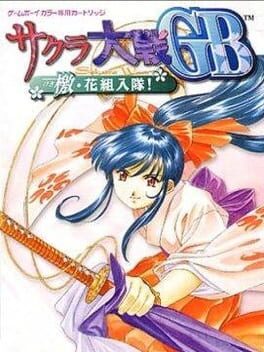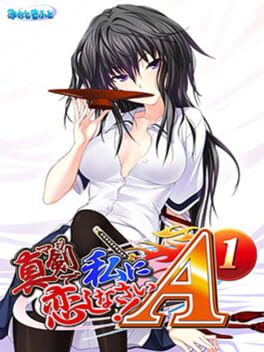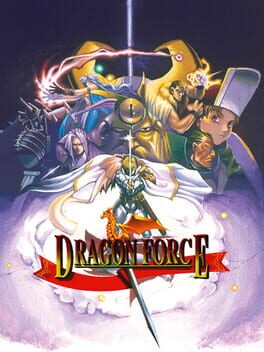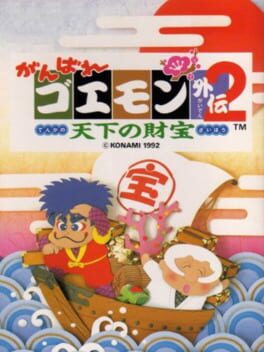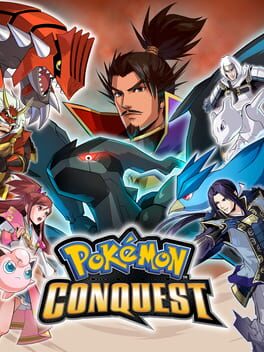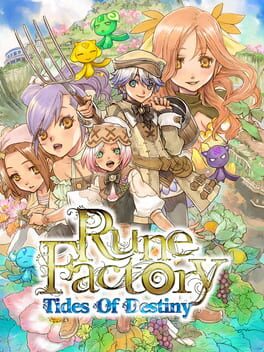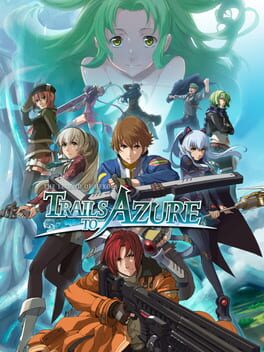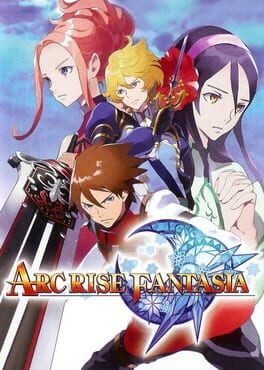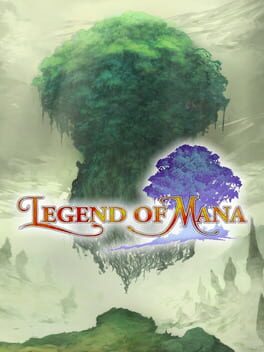mastrehawk
19 reviews liked by mastrehawk
I only found out this game existed a couple of years ago as my interest in the Sakura Wars franchise grew thanks to work by fans on patches bringing them over to the West in English for the first time. Sakura Wars: Go Forth Young Cadet! as translated is kind of an interesting game. It seems to be set during the latter half of the first Sakura Wars game (1996) and to be honest I feel that playing that first is a necessary perquisite to play this. Knowing the characters makes a huge difference.
You play the role of a young unnamed candidate with high spirit power scouted by Vice Commander Ayame Fujieda of the Imperial Assault Troupe. If successfully chosen you are invited to a month long trial with the troupe to see how you perform. The premise is kind of...odd to be honest. This is never mentioned in any form to my knowledge anywhere else (so probably isn't regarded as cannon?) and recruiting someone off the street for only 30 days to teach them everything about a top secret military unit hidden in the heart of Tokyo with no intention of keeping them permanently? It seems a little tactically unsound.
Regardless the premise sets up for a clean slate to meet the girls from the unit and spend time with them either training or just socially. The cadet has several attributes to manage over the 30 days. Stamina, Intellect, Spirit Power, Guts, Agility and Accuracy. You can spend time training up to twice a day to improve these at the cost of stamina or skip a training session to recover your stamina by having a nap (as apparently sleeping over night doesn't do that?). At the end of the 30 days you are given a rank based on your performance. I got rated as an Usher though the description made that sound like a positive thing at least.
The morning training sessions are mapped out for you over the course of a week training with Sakura, Sumire, Kanna, Iris, Kohran, or Maria. Each character builds up a different stat and you can choose who to train with in the afternoons if you want to specialise further. At the end of each week you have a mock battle in one of the Koubu mechs. It's a turn based affair with which Koubu you choose being directed by the stats you've built or relationships you want to increase further.
This is where the game comes across as a little odd again because it takes the almost dating sim / visual novel elements of the main game with talking with the girls in-between training. You select dialogue options on how to respond resulting in neutral, positive or negative retorts. At times it's a bit flirty but will never go anywhere due to set ups from the original game. The girls are spread all over the theatre you all work from in the morning, noon and evening though there is no way to tell who they are until you begin the conversation. If you build up a good enough relationship with a character you will get extra scenes and endings with them. I focused on Sakura to see most of hers. Some conversations will give you minigames to play like shooting targets or hitting wood blocks with swords as the most interactive part of the whole game. Some conversations will also lead to instant game overs which was irritating. In my case on my recent run I ended up with some permanent damage from a situation I couldn't get rid of and there is no way in most cases of knowing a possible outcome. In that conversation it was instant game over or permanent stat damage as my two options having rewound on emulation to see.
I really dislike the trial and error nature of the visual novel having such frustrating effects with no way of knowing and it's not that frequent that it's possible to play through without even knowing they are there. So when it does happen it's like a bolt out of nowhere. Whilst it is designed to have multiple play throughs to see all events (Someone trying the worst possible run without game overs amuses me) in it's short play length. Having the character icons on the map hidden at a cost of 5000 points per girl when a single playthrough only earns you 2000 is one hell of a grind. (Though this game also had an extra peripheral of a modified Tamagotchi called pocket Sakura that worked as a pedometer to gain points for the shop when connected to your gameboy) You can also buy music, voice clips and bromide pictures of the girls from the shop for these points too.
This brings me to my last point and the most impressive is the production values. Maybe because it's more visual novel than game but Sakura Wars on the Gameboy colour looks and sounds phenomenal for the system. The character sprites, art design and backgrounds are so far of anything else I've seen on the system. They really did manage to bring the game to a portable without losing the aesthetic that makes this series what it is. the music transitions amazingly well too. The theme title is instantly recognisable albeit without the singing. Other Tracks from the original game transition just as well.
So an odd game in some ways but I must admit despite that I kind of like it? It's technically extremely impressive and getting to spend more time with the Sakura Wars cast on a platform I didn't think was capable of capturing the essence was a pleasant surprise. I hope Sakura Taisen GB2 gets translated at some point in the future as I understand that is more of a dungeon crawler so would be interested to know how it fares.
+ Amazing visuals and music considering the platform limitations.
+ Getting to spend more time with the Sakura Wars cast is great for fans.
+ Lots of replayability and things to unlock.
- Some instant game overs just aren't fun.
- The unlockable extras to navigate the game easier are way too expensive.
- Game's story premise seems slightly out of place in the grand scheme of things.
You play the role of a young unnamed candidate with high spirit power scouted by Vice Commander Ayame Fujieda of the Imperial Assault Troupe. If successfully chosen you are invited to a month long trial with the troupe to see how you perform. The premise is kind of...odd to be honest. This is never mentioned in any form to my knowledge anywhere else (so probably isn't regarded as cannon?) and recruiting someone off the street for only 30 days to teach them everything about a top secret military unit hidden in the heart of Tokyo with no intention of keeping them permanently? It seems a little tactically unsound.
Regardless the premise sets up for a clean slate to meet the girls from the unit and spend time with them either training or just socially. The cadet has several attributes to manage over the 30 days. Stamina, Intellect, Spirit Power, Guts, Agility and Accuracy. You can spend time training up to twice a day to improve these at the cost of stamina or skip a training session to recover your stamina by having a nap (as apparently sleeping over night doesn't do that?). At the end of the 30 days you are given a rank based on your performance. I got rated as an Usher though the description made that sound like a positive thing at least.
The morning training sessions are mapped out for you over the course of a week training with Sakura, Sumire, Kanna, Iris, Kohran, or Maria. Each character builds up a different stat and you can choose who to train with in the afternoons if you want to specialise further. At the end of each week you have a mock battle in one of the Koubu mechs. It's a turn based affair with which Koubu you choose being directed by the stats you've built or relationships you want to increase further.
This is where the game comes across as a little odd again because it takes the almost dating sim / visual novel elements of the main game with talking with the girls in-between training. You select dialogue options on how to respond resulting in neutral, positive or negative retorts. At times it's a bit flirty but will never go anywhere due to set ups from the original game. The girls are spread all over the theatre you all work from in the morning, noon and evening though there is no way to tell who they are until you begin the conversation. If you build up a good enough relationship with a character you will get extra scenes and endings with them. I focused on Sakura to see most of hers. Some conversations will give you minigames to play like shooting targets or hitting wood blocks with swords as the most interactive part of the whole game. Some conversations will also lead to instant game overs which was irritating. In my case on my recent run I ended up with some permanent damage from a situation I couldn't get rid of and there is no way in most cases of knowing a possible outcome. In that conversation it was instant game over or permanent stat damage as my two options having rewound on emulation to see.
I really dislike the trial and error nature of the visual novel having such frustrating effects with no way of knowing and it's not that frequent that it's possible to play through without even knowing they are there. So when it does happen it's like a bolt out of nowhere. Whilst it is designed to have multiple play throughs to see all events (Someone trying the worst possible run without game overs amuses me) in it's short play length. Having the character icons on the map hidden at a cost of 5000 points per girl when a single playthrough only earns you 2000 is one hell of a grind. (Though this game also had an extra peripheral of a modified Tamagotchi called pocket Sakura that worked as a pedometer to gain points for the shop when connected to your gameboy) You can also buy music, voice clips and bromide pictures of the girls from the shop for these points too.
This brings me to my last point and the most impressive is the production values. Maybe because it's more visual novel than game but Sakura Wars on the Gameboy colour looks and sounds phenomenal for the system. The character sprites, art design and backgrounds are so far of anything else I've seen on the system. They really did manage to bring the game to a portable without losing the aesthetic that makes this series what it is. the music transitions amazingly well too. The theme title is instantly recognisable albeit without the singing. Other Tracks from the original game transition just as well.
So an odd game in some ways but I must admit despite that I kind of like it? It's technically extremely impressive and getting to spend more time with the Sakura Wars cast on a platform I didn't think was capable of capturing the essence was a pleasant surprise. I hope Sakura Taisen GB2 gets translated at some point in the future as I understand that is more of a dungeon crawler so would be interested to know how it fares.
+ Amazing visuals and music considering the platform limitations.
+ Getting to spend more time with the Sakura Wars cast is great for fans.
+ Lots of replayability and things to unlock.
- Some instant game overs just aren't fun.
- The unlockable extras to navigate the game easier are way too expensive.
- Game's story premise seems slightly out of place in the grand scheme of things.
Dragon Force
1996
Goemon, of all people, has a JRPG, and a relatively neat one at that is something else. While I don't think the game would have particularly sold well in the US, the fact we don't have access to it is certainly a tragedy. Goemon is a fairly interesting franchise, and one that hits that Saturday morning vibe that it be placed right after watching Samurai Pizza Cats.
The fact that this is the second game is a bit lost on me, but apparently they do have some characters come back from the first one as cameos. Either way, the story itself is contained in it's own game, and it's just a fun little race around the world to get all the treasures you can to prove you're the greatest thief in the world! Along the way you meet up with some interesting folks that will stay in your party for a while, including Simon Belmont, and you'll help them solve their problem to some degree. While the party does grow from more than just Goemon and Ebisumaru, largely you never go past having 3 members.
For the most part, the game is a comedy, and while you sometimes get interactions from other party members, it's usually just Goemon bullying Ebisumaru or Goemon being rude. It's very basic comedy, but one that is at least appreciated for the time. As usual with comedy bits, some of them are really out dated and considered offensive for this day and age, but it's never something you can't just look past.
When all is said though, the combat honestly has a pretty robust system on par with the likes of Final Fantasy or Dragon Quest. While I certainly don't think the monster designs are as iconic, they often have their own unique charm to them, and the fact Goemon never shys away from having machinery in old timey Japan makes for some really fun designs and storytelling. This game is particular colorful as well, and is easily one of the better looking Famicon/NES games out there, likely due to being one of the last games on the system.
Overall Ganbare Goemon Gaiden: Treasures of the World is a delightful JRPG that has a little more care and love than you'd expect. As long as you're not expecting too much from this old game; I'm sure many will find it a blast to play through.
The fact that this is the second game is a bit lost on me, but apparently they do have some characters come back from the first one as cameos. Either way, the story itself is contained in it's own game, and it's just a fun little race around the world to get all the treasures you can to prove you're the greatest thief in the world! Along the way you meet up with some interesting folks that will stay in your party for a while, including Simon Belmont, and you'll help them solve their problem to some degree. While the party does grow from more than just Goemon and Ebisumaru, largely you never go past having 3 members.
For the most part, the game is a comedy, and while you sometimes get interactions from other party members, it's usually just Goemon bullying Ebisumaru or Goemon being rude. It's very basic comedy, but one that is at least appreciated for the time. As usual with comedy bits, some of them are really out dated and considered offensive for this day and age, but it's never something you can't just look past.
When all is said though, the combat honestly has a pretty robust system on par with the likes of Final Fantasy or Dragon Quest. While I certainly don't think the monster designs are as iconic, they often have their own unique charm to them, and the fact Goemon never shys away from having machinery in old timey Japan makes for some really fun designs and storytelling. This game is particular colorful as well, and is easily one of the better looking Famicon/NES games out there, likely due to being one of the last games on the system.
Overall Ganbare Goemon Gaiden: Treasures of the World is a delightful JRPG that has a little more care and love than you'd expect. As long as you're not expecting too much from this old game; I'm sure many will find it a blast to play through.
Pokémon Conquest
2012
Third GOTM finished for April 2023. I have mixed emotions. The flaws are obvious; plodding character and army movement, unnecessarily convoluted and frustrating selection-within-a-selection menus and UI, and some wildly inaccurate hit percentages aren't great. However, this game just clicked with me. I enjoyed hunting for randomly-appearing Pokémon with a greater than average link percentage with certain warriors, the limited move sets that forced me to carry certain Pokémon into battle, taking the time to level links and evolve every Pokémon I came across, the theming and character/castle designs, and how it was all wrapped in a comfy isometric tactical viewpoint. This game could stand from several QOL improvements, but at the end of the day I spent over 40 hours on just the main story by choice. That says a lot about how I feel towards this game.
Among Rune Factory games, Tides of Destiny is likely the most polarizing. While technically not the first console, 3D entry to the series -- Frontier precedes it -- it's a game that went its own way, with an original story and characters as well as reimagined mechanics that further distanced the RF series from its parent Harvest Moon, a direction not everybody took well to. I, myself, however, found it to be an important step forward for the RF series.
The first gameplay twist is pretty obvious from "Tides" being in the name of the game. Instead of the town you live in being on a contiguous landmass with the rest of the world, it is an island amidst many others. To progress the story -- in fact, to even be able to farm -- you have to explore the seas and find the correct islands. Notice that I don't use the word "sail" here. Everything is done atop your very own giant golem, Ymir, whose feet can reach the very bottom of the ocean. Ymir can be ridden into the sea, and he lifts islands from the seafloor so you can explore them.
The golem thing is somewhat confusing at first, but it serves its purpose well, adding this unique flavor to the exploration where the place you're looking for might not be there at first. And it's clear the designers put great care into the golem riding feature, as they even made it so you can fight giant sea monsters while on Ymir. Can't really have our character ride a giant construct without a kaiju battle, can we? Such battles are simple, consisting mostly of punching and blocking, but it's an amusing thing to do.
Combat in the main game is quite simple as well, as far as 3D action games go, but it's a bit more elaborate than the top-down RFs. There's a main attack button and a jump button (effectively used for dodging), and while you can get through the entire game just by using those, as you level up your weapon skill, some special moves become available. There are six different types of weapon, each of which has different damage, speed, range and special moves to suit different playstyles.
All weapons are viable if you take the time to learn them, and skill is not as important as keeping your gear up to date. That's where the crafting system comes in: crafting makes up for most of the time spent outside of dungeons, and through it, you can make food, weapons, tools, accessories, medicine and furniture. That happens to be not only the best way to get an edge in combat, but also, it's through it that you'll make most of the money you'll ever need.
Now, you're probably thinking "In a game with such well-developed systems, farming must be incredible!" and... well, hold your horses. I did say the game distanced itself from HM, and farming was practically a casualty. It's still here, but it's been mushed with the monster taming system: the player character no longer plant seeds themselves, but instead assigns monsters to work on the field, and the crops obtained will vary depending on the type of monster and how high their friendship is.
Farming is a secondary mechanic in the game, and it exists to supply crafting ingredients and to fulfill villager requests. On the latter... this is a 2011 game, and farming sims have come a long way since then, but back then, ToDs villagers were outstanding. They had relatively elaborate schedules; their dialogue was improved with them being made aware of festivals, past conversations with you and happenings surrounding other villagers; and they'd also comment on what you're wearing and even wear accessories you gift them.
What made them really special, however, is that all villagers had friendship events for every time you leveled up their friendship. During these events, you got to know that character better, either through a series of conversations on different topics, or through a storyline that developed as the friendship level increased. Again, this is not as impressive if you're coming from more recent games, but at the time, ToD really took it to a new level. It built a sense of living in a real community, and it made preceding games NPCs look like bots in comparison.
That being said, the writing is still far from perfect, and it leans into deeply troubling territory all too often. For instance, with sexism: male characters are told to "be a man" in their events, while female ones get to hear that learning cooking and laundry is "going to be useful once you're married". The absolute worst bits, though, come during the postgame, when romance starts being a thing. Off the top of my head, there's a couple of obvious gal pals whose friendship events revolve around their relationship, but who then suddenly forget about all that and decide what they really want is a piece of Aden. In addition to that, there's the bachelor who uses straight-up pick-up artist tactics on Sonja.
Poor Sonja. Yet another innovation for RF in Tides of Destiny was the ability to play as a female character, though the way it was done, it feels like an afterthought. As the game's main story goes, you play as childhood friends Aden and Sonja, who are going about their lives in Fenith Island until, one day, they find themselves teleported to a mysterious land. If that wasn't bad enough, they also find themselves sharing one body -- that of Aden. This means that, until the main narrative is done, you're forced to play as Aden anyway. And you might as well stick with him, since Sonja gets absolutely shafted when it comes to romance options. Aden gets a whopping ten bachelorettes to choose from, while Sonja gets only four (three when you cross out the PUA), and of course there are no same-sex marriages.
Maybe it's too much to expect for a 2011 game to take the series that far. Well, it's not, but anyway. Rough edges aside, Tides of Destiny was a very positive surprise -- the track record for this series is to fall face down when they try to be ambitious (cough cough Rune Factory 2 cough), but ToD managed to deliver a pretty enjoyable experience.
The first gameplay twist is pretty obvious from "Tides" being in the name of the game. Instead of the town you live in being on a contiguous landmass with the rest of the world, it is an island amidst many others. To progress the story -- in fact, to even be able to farm -- you have to explore the seas and find the correct islands. Notice that I don't use the word "sail" here. Everything is done atop your very own giant golem, Ymir, whose feet can reach the very bottom of the ocean. Ymir can be ridden into the sea, and he lifts islands from the seafloor so you can explore them.
The golem thing is somewhat confusing at first, but it serves its purpose well, adding this unique flavor to the exploration where the place you're looking for might not be there at first. And it's clear the designers put great care into the golem riding feature, as they even made it so you can fight giant sea monsters while on Ymir. Can't really have our character ride a giant construct without a kaiju battle, can we? Such battles are simple, consisting mostly of punching and blocking, but it's an amusing thing to do.
Combat in the main game is quite simple as well, as far as 3D action games go, but it's a bit more elaborate than the top-down RFs. There's a main attack button and a jump button (effectively used for dodging), and while you can get through the entire game just by using those, as you level up your weapon skill, some special moves become available. There are six different types of weapon, each of which has different damage, speed, range and special moves to suit different playstyles.
All weapons are viable if you take the time to learn them, and skill is not as important as keeping your gear up to date. That's where the crafting system comes in: crafting makes up for most of the time spent outside of dungeons, and through it, you can make food, weapons, tools, accessories, medicine and furniture. That happens to be not only the best way to get an edge in combat, but also, it's through it that you'll make most of the money you'll ever need.
Now, you're probably thinking "In a game with such well-developed systems, farming must be incredible!" and... well, hold your horses. I did say the game distanced itself from HM, and farming was practically a casualty. It's still here, but it's been mushed with the monster taming system: the player character no longer plant seeds themselves, but instead assigns monsters to work on the field, and the crops obtained will vary depending on the type of monster and how high their friendship is.
Farming is a secondary mechanic in the game, and it exists to supply crafting ingredients and to fulfill villager requests. On the latter... this is a 2011 game, and farming sims have come a long way since then, but back then, ToDs villagers were outstanding. They had relatively elaborate schedules; their dialogue was improved with them being made aware of festivals, past conversations with you and happenings surrounding other villagers; and they'd also comment on what you're wearing and even wear accessories you gift them.
What made them really special, however, is that all villagers had friendship events for every time you leveled up their friendship. During these events, you got to know that character better, either through a series of conversations on different topics, or through a storyline that developed as the friendship level increased. Again, this is not as impressive if you're coming from more recent games, but at the time, ToD really took it to a new level. It built a sense of living in a real community, and it made preceding games NPCs look like bots in comparison.
That being said, the writing is still far from perfect, and it leans into deeply troubling territory all too often. For instance, with sexism: male characters are told to "be a man" in their events, while female ones get to hear that learning cooking and laundry is "going to be useful once you're married". The absolute worst bits, though, come during the postgame, when romance starts being a thing. Off the top of my head, there's a couple of obvious gal pals whose friendship events revolve around their relationship, but who then suddenly forget about all that and decide what they really want is a piece of Aden. In addition to that, there's the bachelor who uses straight-up pick-up artist tactics on Sonja.
Poor Sonja. Yet another innovation for RF in Tides of Destiny was the ability to play as a female character, though the way it was done, it feels like an afterthought. As the game's main story goes, you play as childhood friends Aden and Sonja, who are going about their lives in Fenith Island until, one day, they find themselves teleported to a mysterious land. If that wasn't bad enough, they also find themselves sharing one body -- that of Aden. This means that, until the main narrative is done, you're forced to play as Aden anyway. And you might as well stick with him, since Sonja gets absolutely shafted when it comes to romance options. Aden gets a whopping ten bachelorettes to choose from, while Sonja gets only four (three when you cross out the PUA), and of course there are no same-sex marriages.
Maybe it's too much to expect for a 2011 game to take the series that far. Well, it's not, but anyway. Rough edges aside, Tides of Destiny was a very positive surprise -- the track record for this series is to fall face down when they try to be ambitious (cough cough Rune Factory 2 cough), but ToD managed to deliver a pretty enjoyable experience.
Arc Rise Fantasia
2009
Arc Rise Fantasia is a game that never got the appreciation it deserved when it was out. A JRPG for the Wii that was notorious for its limited selection in the genre, ARF took some ideas from the Tales series with regards to its story and tried a different kind of turn-based battle system, and all in all I believe it delivered on almost everything.
The story of ARF emphasizes the religions in the game and how conflicts arise from the differing Law’s of the two major gods. Later in the game, it also shows the history of the world, which is fantastic since more world-building is always something I can appreciate. I won’t go more into the story, but all I will say is that it’s not a groundbreaking story, but it’s an interesting one. One negative I will say is that the game has a lot of back-and-forth between different locations that gets annoying after a while. For a 50+ hour game, it has a limited location pool. Now for the characters
The main characters L’Arc and Ryfia are cliches of the genre. Most of the cast have cliches or tropes to them (Serge being a womanizer, Cecille wanting to be the courageous hero, Leslie being a femme-fatale and so on), though they all have grown throughout the game. They don’t stay static, the cast develops and shows more of them, especially in the Skits that the game offers. I don’t think it will be a stretch to say that the skits give a lot more for the characters than the actual story scenes.
The battle system is fantastic. It’s turn-based, putting a big emphasis on strategizing your turn to be as effective as possible. The game is challenging as well, most of all the boss battles, which with one or two wrong decisions, can spell a game over for you quickly. Level grinding can help you have an easier time with the boss battles, but you won’t run them over with a couple of extra levels. Strategizing is the key to winning. I had trouble with just one of the boss battles, which you are not expected to win, so if you like a challenge this game gets a recommendation just from the battles alone.
And lastly for the music. For me, it's probably tied with the battle system for the best part of the game. A fantastic OST and a joy to listen to, particularly the boss fight themes. Unexpected Fight and Before the Mighty One are the two biggest highlights of the OST.
I will touch on this in the end, but the most infamous part of this game is the atrocious English voice acting. Yes, it's shit, yes I played the undub version with the Japanese VAs, and no it does not ruin the game. If you can only play with the English voice acting, you can turn off the voices in the settings, my only suggestion is to turn it back on for boss battles (the characters give you hits when the boss is going to hit like a truck) and if you can play with the Japanese VAs do it.
In conclusion, Arc Rise Fantasia is a hidden gem that should be experienced by a lot more people.
The story of ARF emphasizes the religions in the game and how conflicts arise from the differing Law’s of the two major gods. Later in the game, it also shows the history of the world, which is fantastic since more world-building is always something I can appreciate. I won’t go more into the story, but all I will say is that it’s not a groundbreaking story, but it’s an interesting one. One negative I will say is that the game has a lot of back-and-forth between different locations that gets annoying after a while. For a 50+ hour game, it has a limited location pool. Now for the characters
The main characters L’Arc and Ryfia are cliches of the genre. Most of the cast have cliches or tropes to them (Serge being a womanizer, Cecille wanting to be the courageous hero, Leslie being a femme-fatale and so on), though they all have grown throughout the game. They don’t stay static, the cast develops and shows more of them, especially in the Skits that the game offers. I don’t think it will be a stretch to say that the skits give a lot more for the characters than the actual story scenes.
The battle system is fantastic. It’s turn-based, putting a big emphasis on strategizing your turn to be as effective as possible. The game is challenging as well, most of all the boss battles, which with one or two wrong decisions, can spell a game over for you quickly. Level grinding can help you have an easier time with the boss battles, but you won’t run them over with a couple of extra levels. Strategizing is the key to winning. I had trouble with just one of the boss battles, which you are not expected to win, so if you like a challenge this game gets a recommendation just from the battles alone.
And lastly for the music. For me, it's probably tied with the battle system for the best part of the game. A fantastic OST and a joy to listen to, particularly the boss fight themes. Unexpected Fight and Before the Mighty One are the two biggest highlights of the OST.
I will touch on this in the end, but the most infamous part of this game is the atrocious English voice acting. Yes, it's shit, yes I played the undub version with the Japanese VAs, and no it does not ruin the game. If you can only play with the English voice acting, you can turn off the voices in the settings, my only suggestion is to turn it back on for boss battles (the characters give you hits when the boss is going to hit like a truck) and if you can play with the Japanese VAs do it.
In conclusion, Arc Rise Fantasia is a hidden gem that should be experienced by a lot more people.
Legend of Mana
1999
Mana's evolution towards western/SaGa-like JRPGs peaked with Legend of Mana, a massive overhaul whose world map and main questline are entirely shaped by the player. Not surprisingly, the contrast between this and its previous output lies in the structure: If Trials of Mana built its narrative around distinct, polyphonic journeys, this work dispensed with the narrative altogether - sporting non-linear progression and optional, vaguely related arcs with lots of charming characters and events to encounter. Along the way, its high-fantasy setting, silly humor, simplistic dialogue and colorful hand-drawn aesthetic gives the adventure a delightful, storybook-like quality, which makes up for the lack of a cohesive plot.
Obscure as they may be, new systems like crafting, farming, and even monster raising complement its less urgent and more relaxed design. Ditto for its real-time battle system, which mirrors that approach with tweaks to pacing (long recovery, variable party size), customization (fully configurable movesets) and especially to flexibility (combos, chain-cancelling). Super moves and a huge influx of new skills contribute to their least challenging but also their most diverse and enjoyable combat yet. More than a cheerful romp, this is an unlikely reinvention that ranks among its series' best.
Obscure as they may be, new systems like crafting, farming, and even monster raising complement its less urgent and more relaxed design. Ditto for its real-time battle system, which mirrors that approach with tweaks to pacing (long recovery, variable party size), customization (fully configurable movesets) and especially to flexibility (combos, chain-cancelling). Super moves and a huge influx of new skills contribute to their least challenging but also their most diverse and enjoyable combat yet. More than a cheerful romp, this is an unlikely reinvention that ranks among its series' best.
